- Home
- slideshows
- miscellaneous
- US Air Force planes can be rented for as little as $917 an hour - here's how much bombers, fighters, and cargo planes go for
US Air Force planes can be rented for as little as $917 an hour - here's how much bombers, fighters, and cargo planes go for
A-10C Thunderbolt — $6,454

AC-130J Ghostrider — $7,541
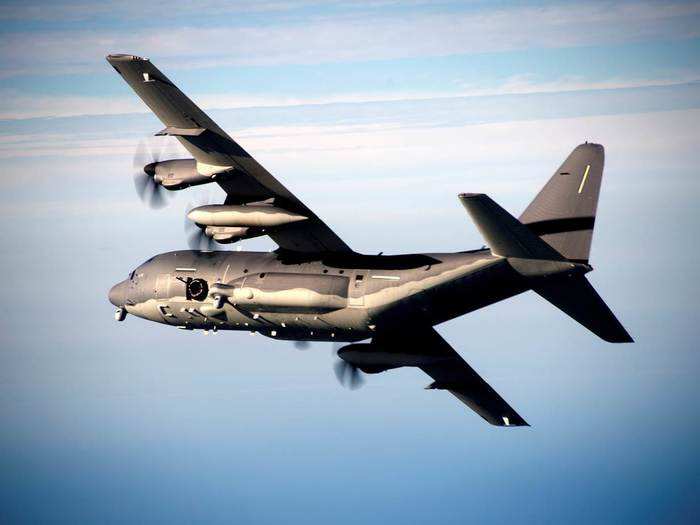
The AC-130J is the latest variant of the AC-130 gunship, upgraded with enhanced avionics as well as integrated navigation systems, defensive systems, and radar. It is also modified with the Precision Strike Package, which has a mission management system that puts sensors, communications, and order-of-battle and threat information into a common picture.
The Ghostrider — a name officially designated in May 2012 — is still relatively new, having completed developmental test and evaluation in June 2015. As of 2016, the Air Force planned to have 32 Ghostriders in the active-duty force by fiscal year 2021.
The aircraft has struggled, particularly with its 30 mm and 105 mm guns. But the commander of the 1st Special Operations Wing said last year the gunship would probably be "the most requested weapons system from ground forces in the history of warfare."
B-1B Lancer — $51,475
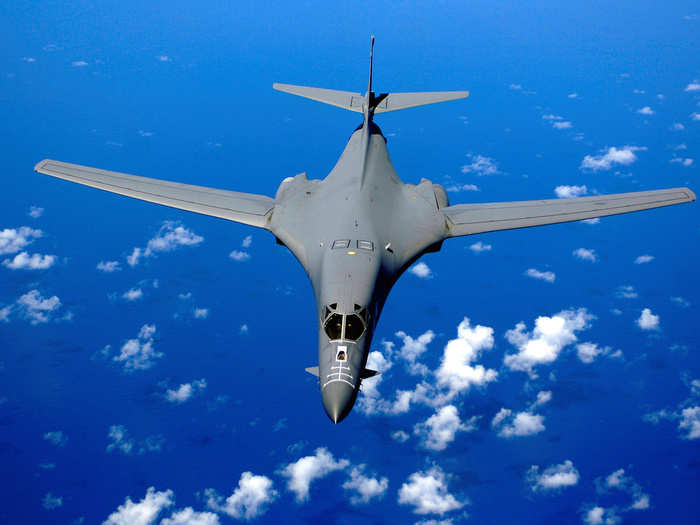
Of Air Force aircraft, the B-1B Lancer packs the largest payload — 75,000 pounds — of both guided and unguided weapons and is the "backbone" of the US long-range bomber force.
It has a ceiling of 30,000 feet, which isn't the highest of the Air Force's bombers, but it is the fastest, capable of topping 900 mph, or a little over the speed of sound at sea level.
In order to comply with the Strategic Arms Reduction Treaty signed by the US and the Soviet Union in the early 1990s, the Lancer was modified so that it cannot carry nuclear weapons, a conversion process completed in 2011.
As of late 2016, the Air Force had 64 Lancers — two for testing — all of which were in the active force.
B-2A Spirit — $62,012

The B-2A stealth bomber arrived to the Air Force in 1993, six years after the first Lancer was delivered.
Unlike the Lancer, which is designed for high-speed, low-altitude strikes, the Spirit flies higher — up to 50,000 feet — and slower. It's also capable of hauling nuclear weapons.
As of the end of 2015, there were 20 Spirits in the Air Force active-duty fleet, one of which was for testing. The only operational base for the B-2 is Whiteman Air Force Base in Missouri, so add that flying time into your budget.
B-52H Stratofortress — $33,919
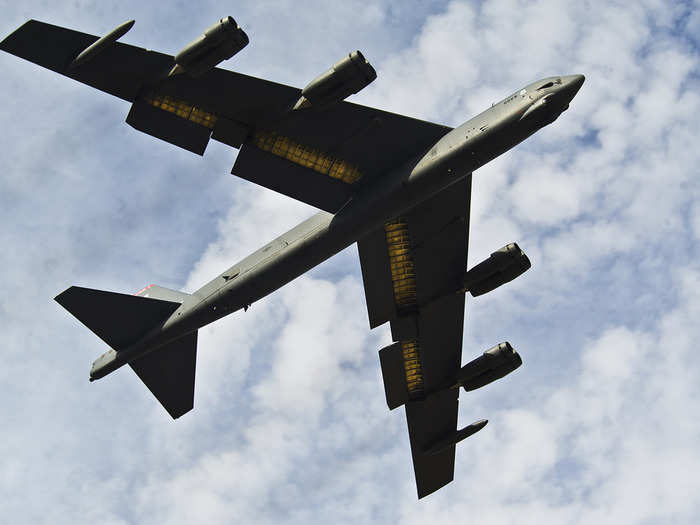
Price-wise, the B-52 is a bargain compared to its bomber counterparts, but the Stratofortress is well over a half-century old, reaching initial operating capacity in spring 1952.
Flying at 650 mph up to 50,000 feet with a payload of 70,000 pounds of both conventional and nuclear weapons, it can conduct strategic strikes, close-air support, and maritime operations.
Its unfueled range is more than 8,800 miles. With aerial refueling, its range is limited only by its crew's endurance.
At the end of 2015, there were 58 B-52s in use by the Air Force's active-duty force and another 18 being used by the Air Force Reserve. They're all H models and are assigned to the 5th Bomb Wing at North Dakota's Minot Air Force Base and to the 2nd Bomb Wing at Barksdale Air Force Base in Louisiana.
C-130J Super Hercules — $6,651
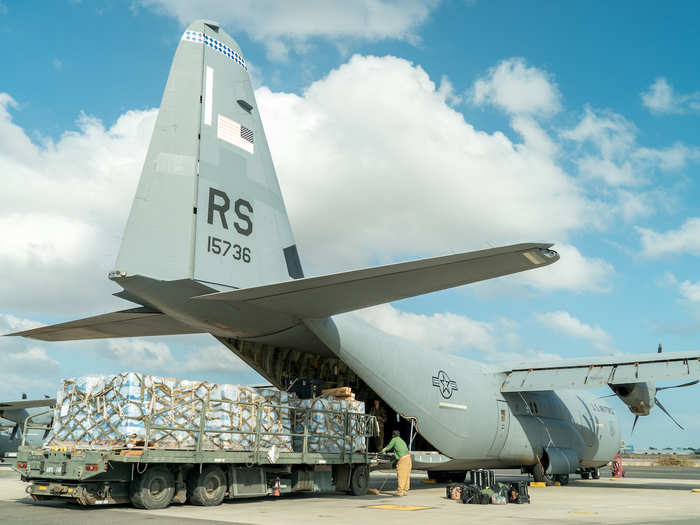
The C-130J is the latest addition to the C-130J family, replacing older C-130E and some C-130Hs with more flying hours.
Technology on the C-130J reduces manpower needs and operational and maintenance costs. The J model also climbs higher and faster and can fly farther with a higher cruising speed, in addition to taking off and landing in a shorter distance.
As of June 2018, the Air Force had 145 C-130Js in active duty, with anther 181 being used by the Air National Guard and 102 by the reserve component.
C-17A Globemaster III — $16,236
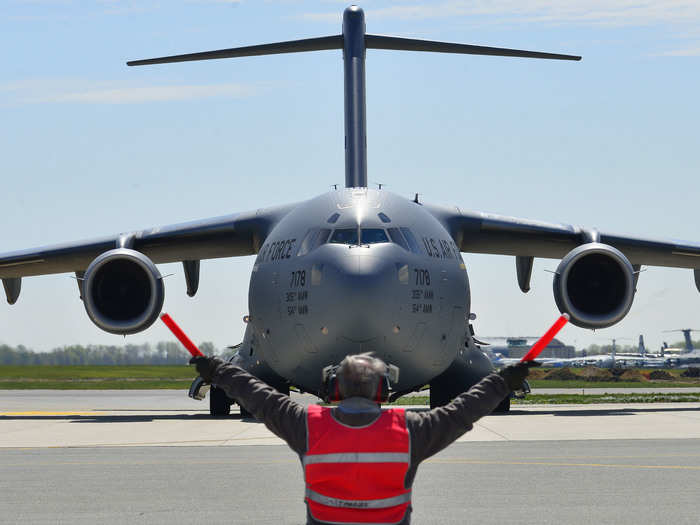
The C-17 is the most flexible member of the Air Force airlift fleet, able to deliver troops and cargo to main operating hubs or to forward bases.
"The C-17 was designed for multi-role functions," Maj. Steve Hahn, an instructor pilot with the Air Force Reserve's 301st Airlift Squadron, said in 2010. "Its strategic and tactical abilities join the missions of the C-5 (Galaxy) and C-130 (Hercules) into one aircraft. It does everything, and not many aircraft can do that."
As of mid-2018, there were 157 C-17s in active service, 47 in use by the Air National Guard, and 18 being used by the Air Force reserve.
C-5M Super Galaxy — $25,742
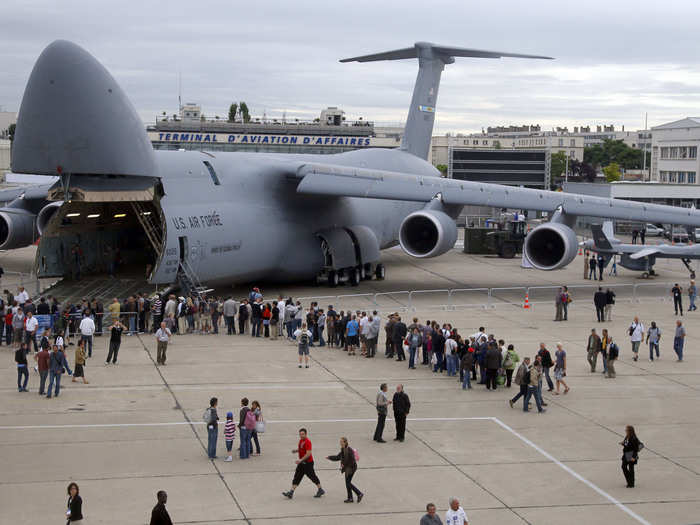
The C-5M Super Galaxy — the modernized version to legacy C-5 aircraft — is the largest aircraft in the Air Force inventory, tasked with transporting troops and cargo.
It can carry oversize cargo — including 50-foot-long submarines — over intercontinental distances, and doors at the front and back allow for it to be loaded and offloaded at the same time.
Its maximum cargo is 281,000 pounds, and the longest distance it can fly without refueling is just over 5,500 miles — the distance from its base at Dover Air Force Base to Incirlik air base in Turkey.
In August 2018, Lockheed Martin delivered the last of 52 ugraded C-5s, bringing 49 C-5Bs, two C-5Cs, and one C-5A up to the M variant and wrapping up a 17-year overhaul effort. The work extends the C-5 fleet's service life into the 2040s.
E-4B — $73,123
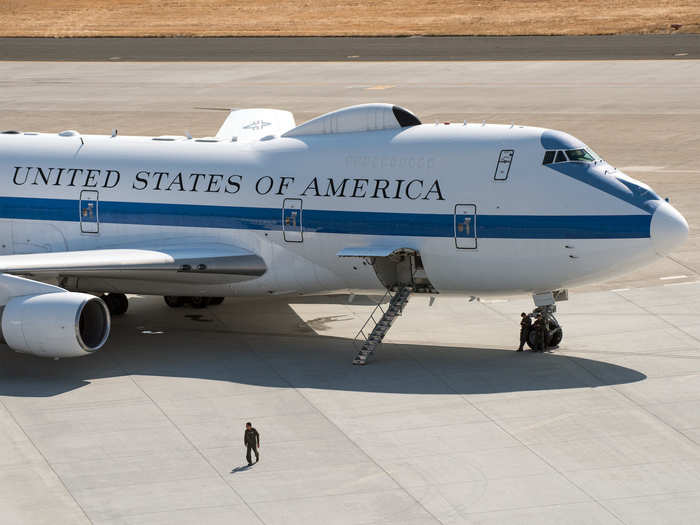
The E-4B is an expensive aircraft with an invaluable mission.
It serves as the National Airborne Operations Center, providing a highly survivable command, control, and communications center where the president, defense secretary, and joint chiefs of staff can direct US forces, execute emergency war orders, and coordinate actions by civil authorities if ground command centers are destroyed.
The Air Force has four E-4Bs in its active force, and at least one is on 24-hour alert. In addition to an advanced satellite communications system and an electrical system to support it, the E4-B is hardened against electromagnetic pulses, if that's something you're worried about.
F-15E Strike Eagle — $17,936
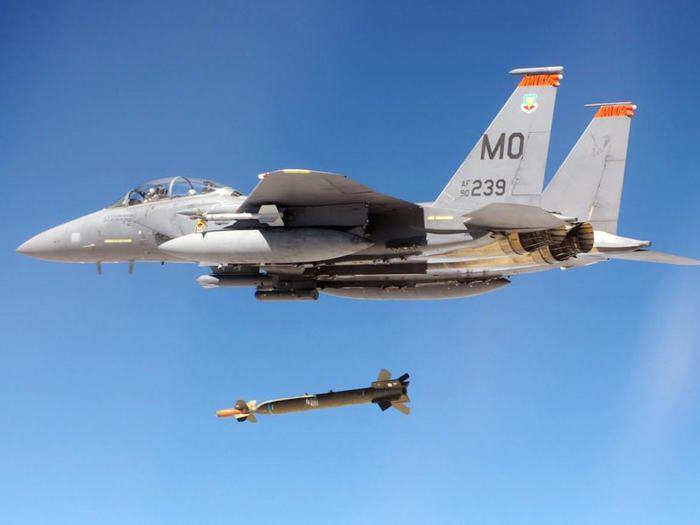
The F-15 is an all-weather, highly maneuverable tactical fighter designed to gain and maintain air superiority. It became operational in 1975 and has been the Air Force's primary fighter jet and interceptor for decades.
The F-15E is two-seat, integrated fighter for all-weather, air-to-air, and deep interdiction missions. The Air Force has 219 F-15Es in total.
The first F-15E was delivered in 1989, about a decade after the F-15C, a single-seat fighter, and the F-15D, another two-seater. The latter two are also available, but they'll cost you a little be more — $22,233 for the C model and $22,045 for the D model.
F-16C and F-16D — $8,000 and $8,696, respectively
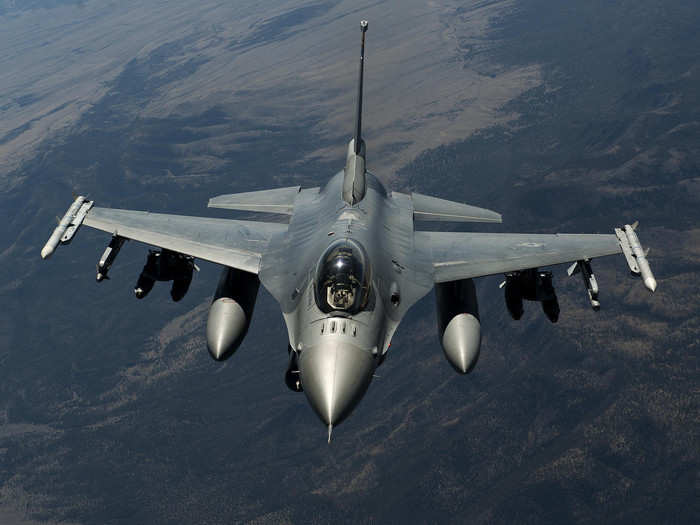
Despite the low price, the F-16 is considered one of the most capable fighter aircraft out there.
It first arrived in 1979, built in partnership between the US, Belgium, Denmark, the Netherlands, and Norway.
The F-16C/D started arriving in 1981 and are the single- and two-seat counterparts to the F-16A/B, bringing improved cockpit control and display technology.
As of late 2015, the Air Force had 1,017 F-16s across its active, reserve, and guard components.
F-22A — $38,005
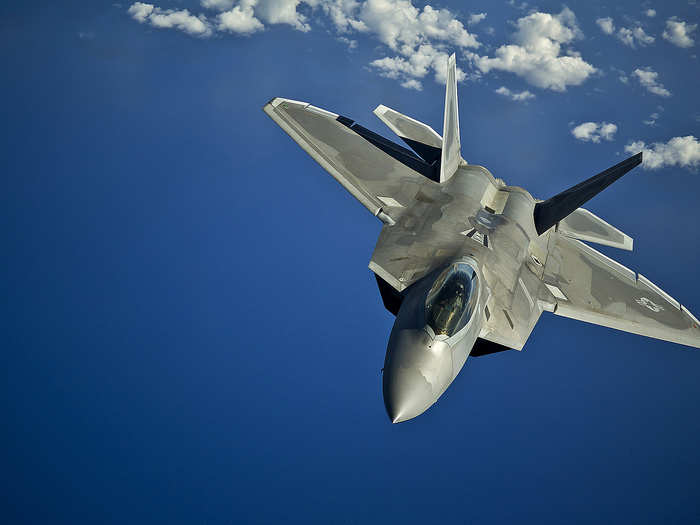
Reaching initial operating capability in December 2005, the single-seat F-22 is considered the Air Force's first fifth-generation fighter, incorporating low-observable technology that gives it an edge over air-to-air and surface-to-air threats.
Caught between low-intensity wars in Iraq and Afghanistan, a crushing global recession in 2008, and the Pentagon's move toward the F-35 in the late 2000s, the F-22 program was shut down in 2009. As of September 2015, there were 183 F-22s in use by the Air Force.
F-35A — $18,501
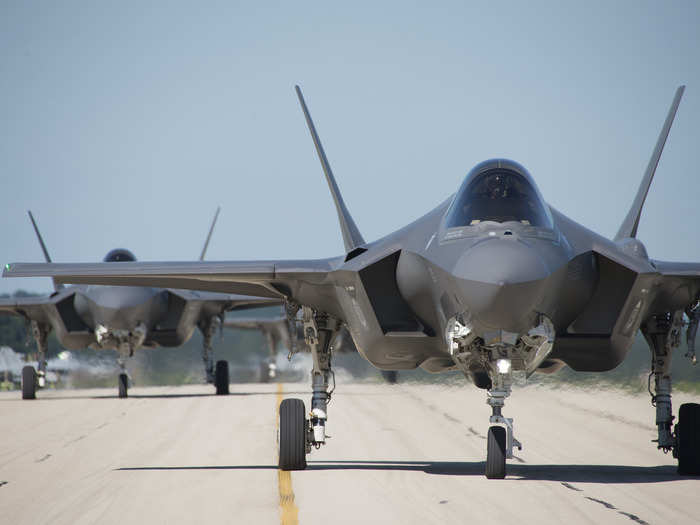
The F-35A Lightning II is the Air Force's second and newest fifth-generation fighter, reaching initial operational capability in August 2016.
The US, the UK, Italy, the Netherlands, Turkey, Canada, Denmark, Norway, and Australia were all involved in the F-35's development.
The F-35A is meant carry out air-to-air combat and ground-attack missions, replacing the F-16 and the A-10, while bringing next-generation stealth technology, enhanced awareness, and reduced vulnerability to the US and allies, several of whom have already received their versions of the fighter.
There is also a carrier variant — meant to replace the Navy's F/A-18s — and a short-takeoff-and-vertical-landing variant, which is meant to replace the US Marine Corps' AV-8B Harriers and F/A-18s, as well as the UK's Harriers and Sea Harriers.
The F-35 has also become the most expensive weapons program in history, and hiccups during its development process have not improved its perception.
KC-46A Pegasus — $7,740
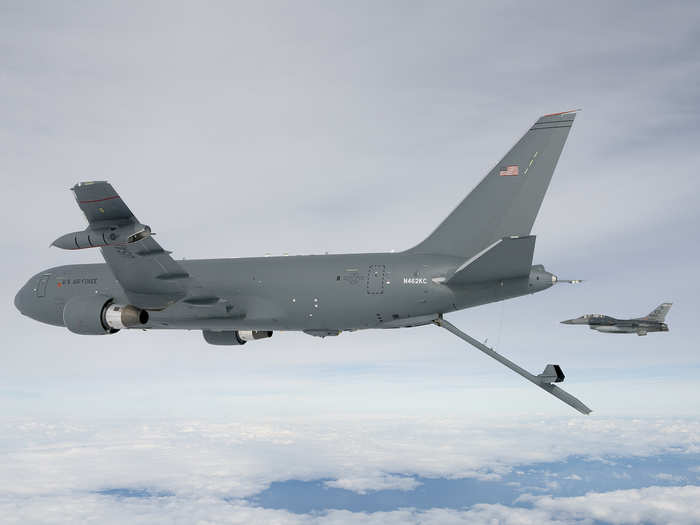
The KC-46A aerial-refueling tanker is the newest addition to the Air Force, with officials accepting the first one from Boeing on January 10.
The program was delayed for years by technical problems, and Boeing has eaten more than $3.5 billion on the program, as the firm is responsible for any costs beyond the Air Force's $4.9 billion fixed-price contract.
Six tankers have been accepted by the Air Force, but Boeing is not out of the woods. Deliveries were suspended earlier this month by the Air Force due to problems with foreign objects — tools and other debris — left aboard the aircraft.
Will Roper, the Air Force's assistant secretary for acquisition, technology and logistics, said it would likely be "some time" before the Air Force began accepting tankers again.
HC-130J Combat King II — $6,001
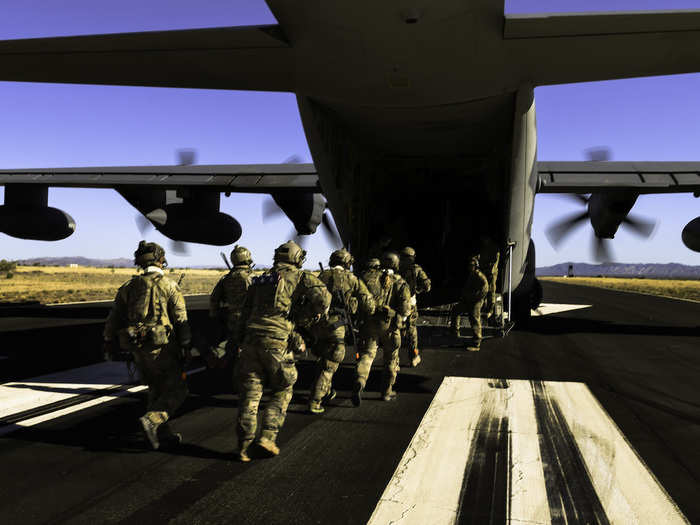
The HC-130J — an extended-range version of the C-130J — replaces HC-130P/Ns as the only dedicated fixed-wing personnel recovery platform in the Air Force inventory, tasked with rapidly deploying to recover downed aviators in enemy territory and with expeditionary, all-weather personnel recovery operations.
MC-130H Combat Talon II — $15,166
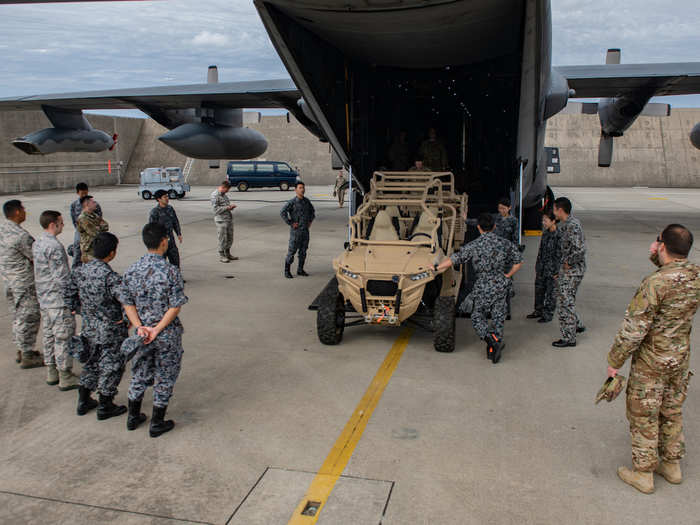
The MC-130H Combat Talon II provides infiltration, exfiltration, and resupply of special operations forces and equipment in hostile or denied territory. Secondary missions include psychological operations and helicopter and vertical lift air refueling.
The Combat Talon II is based on the C-130, with structural changes that include a stronger tail to allow high-speed/low-signature airdrops. It also has terrain-following and terrain-avoidance radars that allow it to fly as low as 250 feet in poor weather.
The MC-130 first flew in 1966 and has operated around the world — an MC-130E landed in the Iranian desert in April 1980 to support Operation Eagle Claw, a failed attempt to rescue Americans being held by Iran.
MC-130Hs were also used to seize an airfield in southern Afghanistan to being ground operations there in 2001, and in 2003 an MC-130H was the first US aircraft to land at Baghdad International Airport. As of the beginning of 2016, the Air Force had 18 MC-130Hs.
LC-130H — $5,774
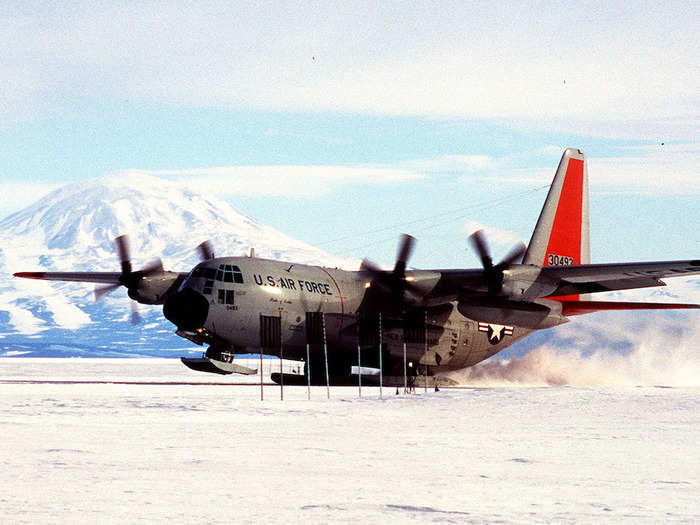
The Air Force has a lot of cargo planes, so you have a lot of options. But what if you need to go to Antarctica? Well then you'll need the LC-130H, the polar version of the C-130.
The US is the only operator of ski-equipped LC-130s, which the 109 Air Wing describes as the "backbone" of US transport within Antarctica, where it supports an array of scientific endeavors, and as a provider of transport between McMurdo Station and New Zealand.
OC-135B — $21,435
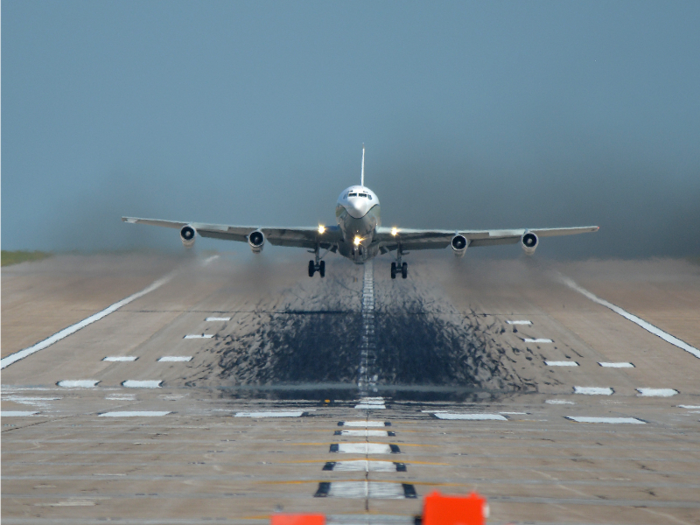
Night or day, austere or hospitable, ice or solid ground, the Air Force's airlift fleet can do it all.
But what if you need to conduct an unarmed observation flight over territory belonging to one of the signatories of the 1992 Open Skies Treaty? That's where the OC-135B comes in.
A modified version of the WC-135B, its main mission is to take pictures, and it's outfitted with equipment and systems to support its cameras and camera operators.
That includes one vertical and two oblique KS-87E framing cameras, which are used for low-altitude photography — about 3,000 feet above ground — and one KA-91C panoramic camera, which scans from side to side to give each photo a wide sweep; it's used for high-altitude photography — roughly 35,000 feet.
As of spring 2014, there were two OC-135Bs in the Air Force inventory.
T-38C Talon and T-6A Texan — $4,156 and $917, respectively
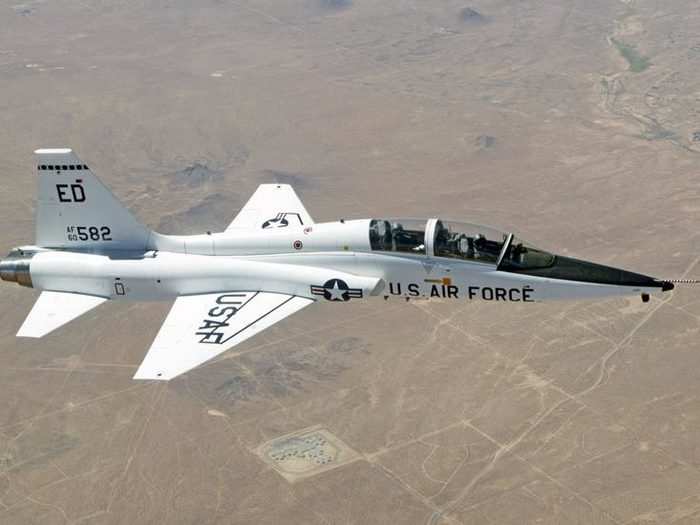
The T-38 Talon is a high-altitude supersonic jet trainer, used for a variety of operations because of its design, ease of maintenance, high performance, and safety record. Air Education and Training Command is its primary user of the T-38, employing it for specialized undergraduate pilot training, preparing pilots to fly F-15s, F-16s, F-22s, A-10s, and B-1Bs.
The T-38 first flew in 1959, and 1,000 of them were delivered between 1961 and 1972. The planes and their components have been modified and upgraded since then, and the Air Force had 546 in use with the active force as of January 2014.
The T-6A Texan II is also a jet trainer, though it only has one engine and is also used by the Navy.
The first operational T-6A was delivered in May 2000. Joint Primary Pilot Training, the Texan's main mission, began in October 2001. Production of the aircraft ended in 2010, and the Air Force currently has 446 of them in use by its active force.
U-2S Dragon Lady — $12,496
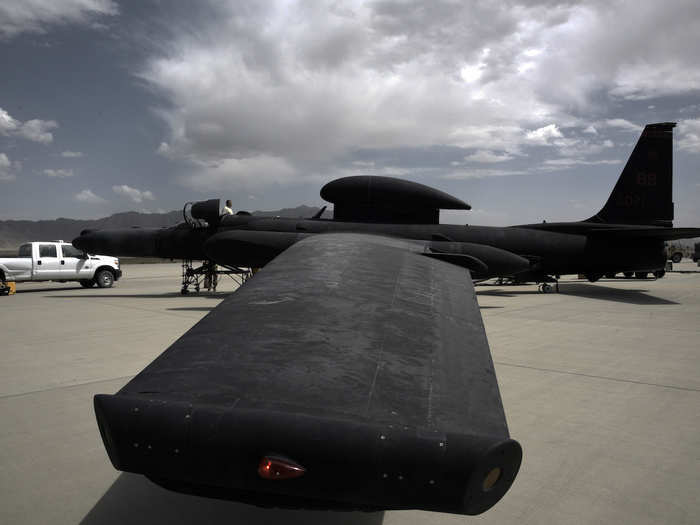
Along with the B-52, the U-2 is one of the only Air Force aircraft introduced early in the Cold War that's still in use.
Despite its age, its prowess is unquestioned. At 70,000 feet, the curvature of the earth gives it a field of vision of about 500 miles. In one mission, it can map all of Iraq.
Built in complete secrecy, the U-2A first flew in August 1955. The spy plane's early history is marked with two high-profile blemishes — a 1960 shootdown over the USSR, which led to the capture of pilot Gary Francis Powers, and a 1962 shootdown over Cuba, which killed pilot Rudolf Anderson Jr. But it remains in use as one of the US's premier surveillance aircraft.
All U-2s have been upgraded, adding a new engine that resulted in a redesignation to U-2S. Pilots train on one of five two-seat aircraft designated TU-2S. (The Air Force announced recently that it would change the training process.)
The U-2 is based at Beale Air Force Base in California, but it rotates worldwide. As of September 2015, there were 33 U-2s in use by the active force, including the five trainers and 2 ER-2s in use by NASA.
WC-130J — $4,472
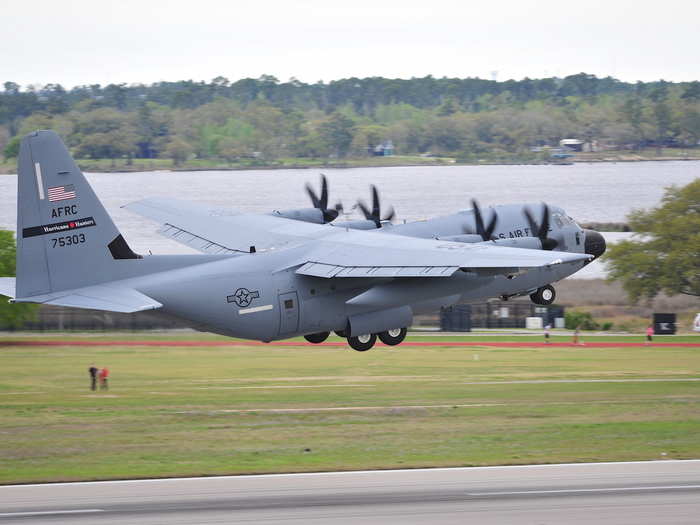
Not every Air Force aircraft is for combat or transport. The WC-130 Hercules is used by the Air Force Reserve for weather missions, flying into tropical storms, hurricanes, and winter storms to gather data.
The WC-130J is a C-130J reconfigured with palletized weather instruments. At its optimum cruising speed of 300 mph it can stay aloft for almost 18 hours. A typical weather mission can last 11 hours and cover 3,500 miles.
As of mid-2014, only 10 WC-130Js were in use, all of them belonging to the Air Force Reserve. They operate out of Keesler Air Force Base in Mississippi, flown by the 53rd Weather Reconnaissance Squadron — the Hurricane Hunters.
WC-135C/WC-135W Constant Phoenix — $33,173
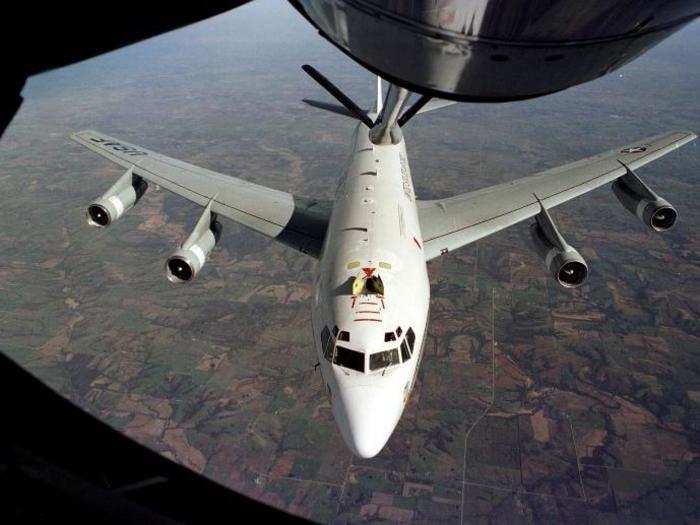
Getting ahold of the Constant Phoenix may be tough. The Air Force only has two of them, and they have a highly specialized mission: Collecting particles, gas, and debris in order to detect any nuclear or radioactive events.
Then-Gen. Dwight D. Eisenhower commissioned the Constant Phoenix program in September 1947. Two years later, one of the program's aircraft picked up evidence of the first Soviet nuclear test while flying between Alaska and Japan. Forty years later, the WC-135W helped track radioactive debris from the meltdown of the Chernobyl nuclear reactor in the USSR.
The WC-135s are the only planes in the Air Force inventory conducting air-sampling operations, which are now done in support of the 1963 Limited Nulcear Test Ban Treaty, which prohibits countries from testing nuclear weapons above ground.
Popular Right Now
Popular Keywords
Advertisement